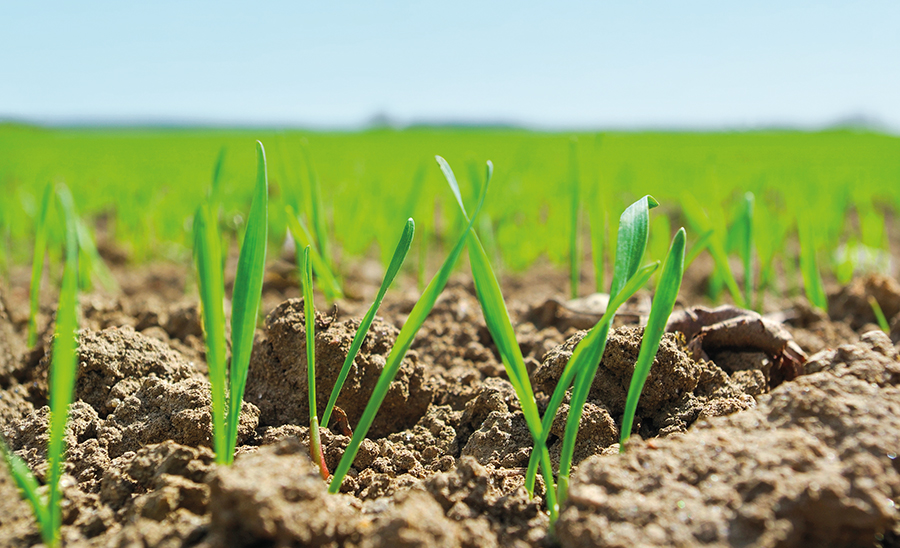Data points to an alarming drop in soil pH
1st July 2024
Soil pH is critical for crop production, so why are so many fields outside the target pH range?

Over 50% of arable soils are below the target pH 6.7 recommended in AHDB’s Nutrient Management Guide (RB209), according to results from over 50,000 soil samples analysed by NRM laboratories between June 2022 and May 2023.
“Nearly 25% of the samples were pH 5.8 or lower, which is extremely low for most arable crops,” NRM soil and crop nutrition agronomist Sajjad Awan says. “While only around a fifth were in the more acceptable target pH range of 6.5 to 7.0.”
That probably accurately reflects industry studies suggesting arable land is only limed on average once every 12 years, way beyond the traditional recommendation of once every five years.
Longer-term data from the NRM study suggests that the pH of arable soils dropped sharply in 2022/23 compared with previous years.
“There could be multiple factors behind the drop in pH from arable soils this year,” Sajjad stresses. “It might be due to weather, an increase in samples from lower pH soils or from specific management systems. There are so many variables and the information provided with each sample is not sufficient to allow us to draw firm conclusions.”
Nitrogen fertilisation or fixation by legumes can be a contributory factor to lowering soil pH, notes agronomist Steve Townsend from soil management specialists Soil First Farming.
“If you look at the ammonium part of ammonium nitrate, when that gets taken into the plant, the plant at root level snips off two hydrogens and takes in amide, which is NH2 rather than NH4.
“Those two hydrogen atoms go back into the soil and cause the soil to become more acidic as more of the cations are filled up with hydrogen rather than calcium, magnesium or potassium.”
Optimum soil pH
Optimum soil pH is crucial for nutrient uptake. Most arable crops prefer slightly acidic conditions, hence the target of pH 6.7, as that is when most nutrients are available for plants to absorb.
As soon as soil pH is below the target, fertiliser efficiency drops, as it is locked up or lost, with plants not having access to it. For example, at pH 6, nitrogen efficiency drops to 89% compared with pH 7, while phosphorus is even more affected at just 52% efficiency. At that pH, nearly 20% of fertiliser is wasted, a figure which increases to 32% at pH 5.5, according to AHDB figures.
It’s good farming practice to keep your pH where it needs to be, Steve stresses.
It’s not just about pH, he adds, but also about calcium. “If you want soil biology to grow and flourish, you need enough available calcium. We use calcium for our bones, soil biology uses it for its skins.
“It’s also important as a nutrient for crops for rooting, to help nutrition be picked up and for soil structure.
Choosing liming products carefully is vital, he warns.
Research by the University of North Carolina shows that pH continues to drop following lime coarser than 0.84mm, while between 0.3mm and 0.84mm, it takes 15–18 months post-application for pH to peak.
In contrast, material between 0.15 and 0.18mm will react within six months and hold pH at that level, and even finer lime will increase pH immediately, peaking at eight months before beginning a slow decline.
British Sugar’s LimeX meets that spec, says the firm’s LimeX business manager, Glenn Carlisle. LimeX is a co-product of lime being used within the sugar purification process to remove impurities from sugar juice.
As a minimum, 85% of the LimeX product will pass through a 0.15mm sieve, with 97% passing through a 3.35mm sieve. At that spec, Glenn says in the right conditions pH should rise within 4–6 weeks, whereas other products can take from six to 12 months before you see a rise.
“The additional benefit of the fine particle size is that the calcium is more available, and you can increase the available calcium concentration in the soil,” Glenn concludes.
British Sugar updates its soil sampling service
British Sugar has updated its soil sampling service, which it says will enhance its capabilities. This summer, it will relaunch to customers in the sugar beet growing area.
Coordinated from its Wissington sugar factory in Norfolk, a team of up to 12 samplers covers the whole beet growing area from the Essex coast to the Vale of York. With soil health becoming an increasing focus for the industry, the team felt the time was right to review the service, streamline the process and increase its capabilities.
“We have upgraded our software and equipped all of our samplers with GPS equipment to accurately track where samples are taken and where there may be issues with soil pH in a field,” explains Paige Fuller, soil sampling coordinator for British Sugar.
“Once the samples arrive in the lab, their progress is tracked using a barcode system. This has streamlined our processing time, meaning we expect to turn around soil pH results within one month of a request being placed.”
Paige encourages beet growers to submit soil sampling requests through the online portal in their My British Sugar account. Non-beet growers can also make a request through their local British Sugar agriculture manager.
Read more arable news


